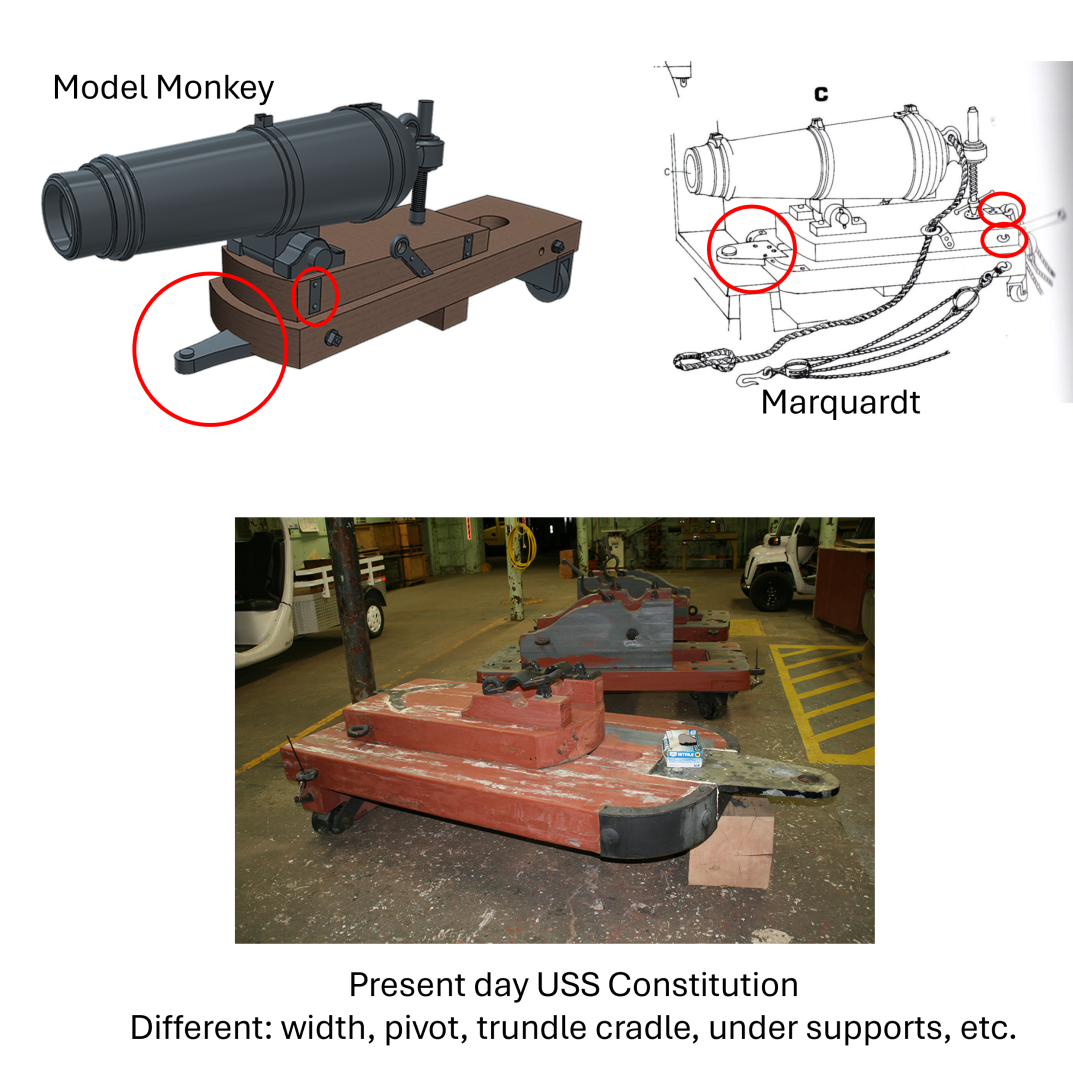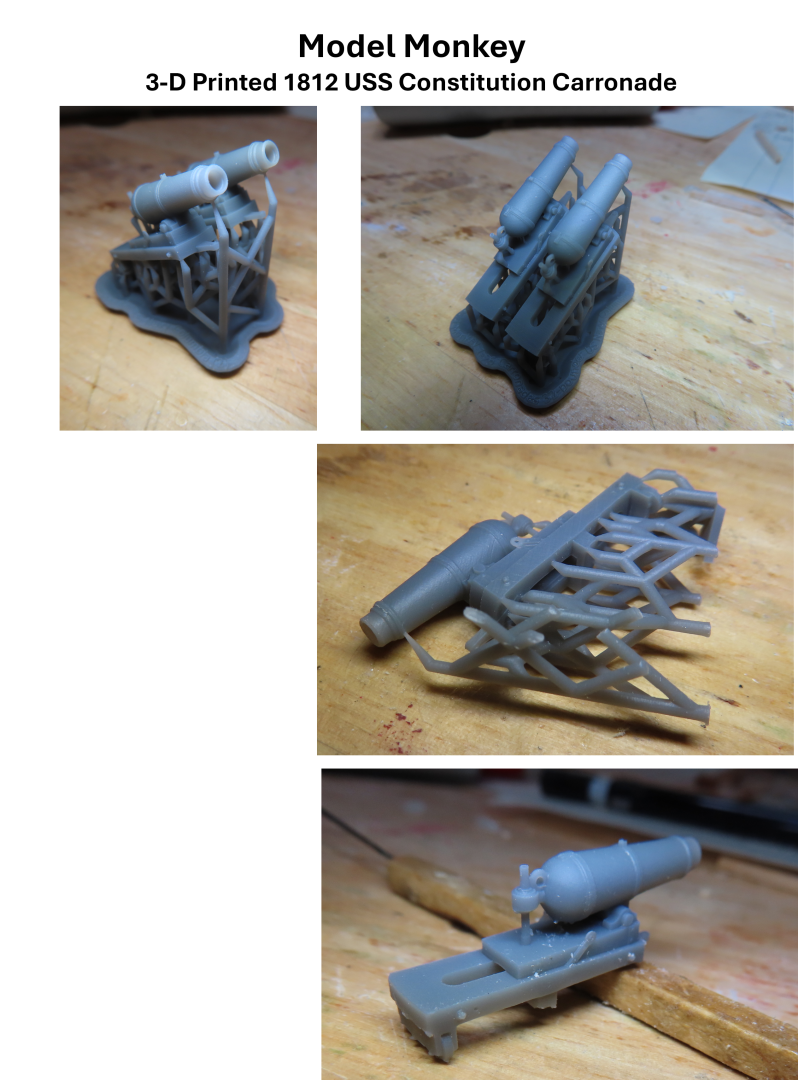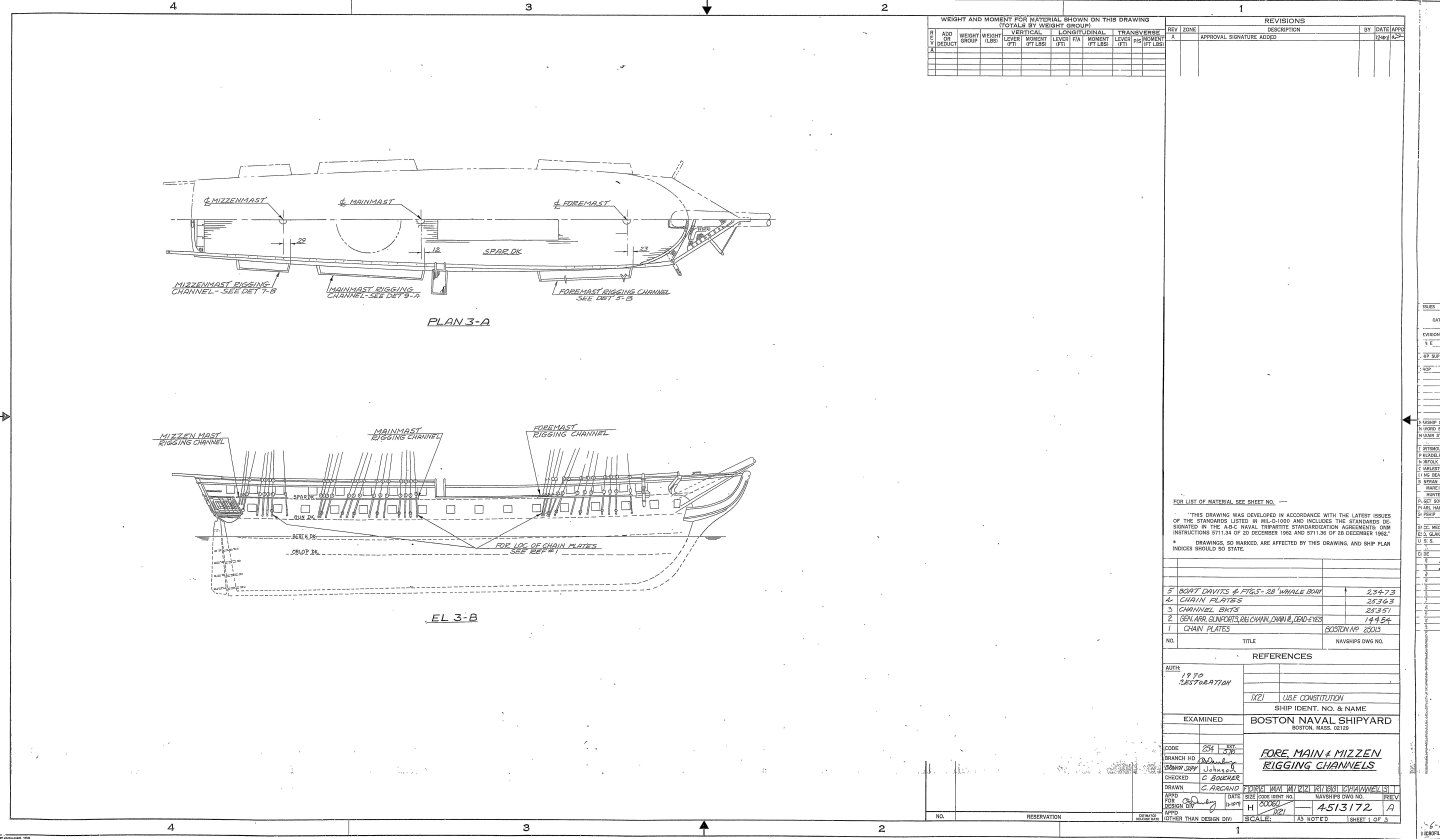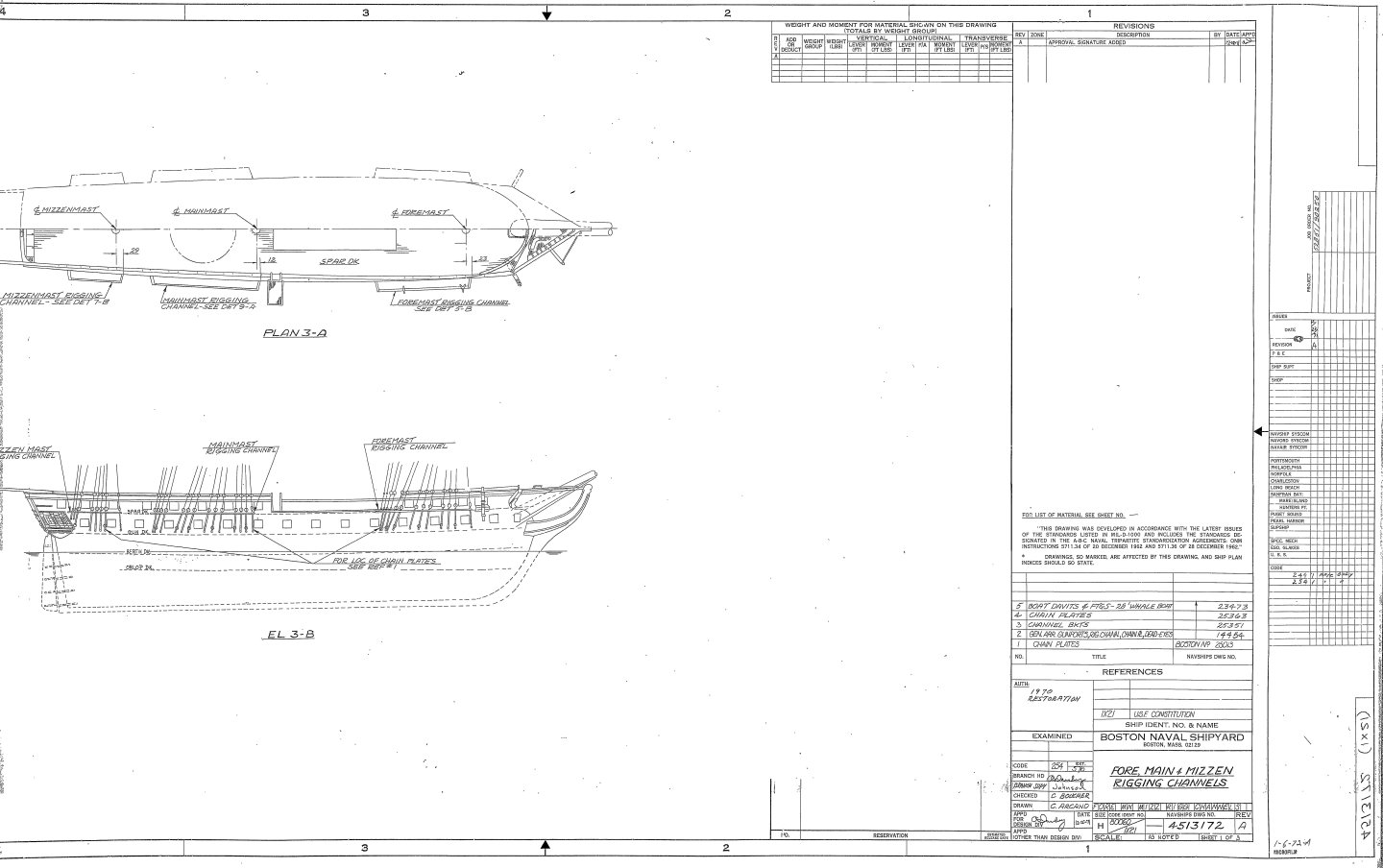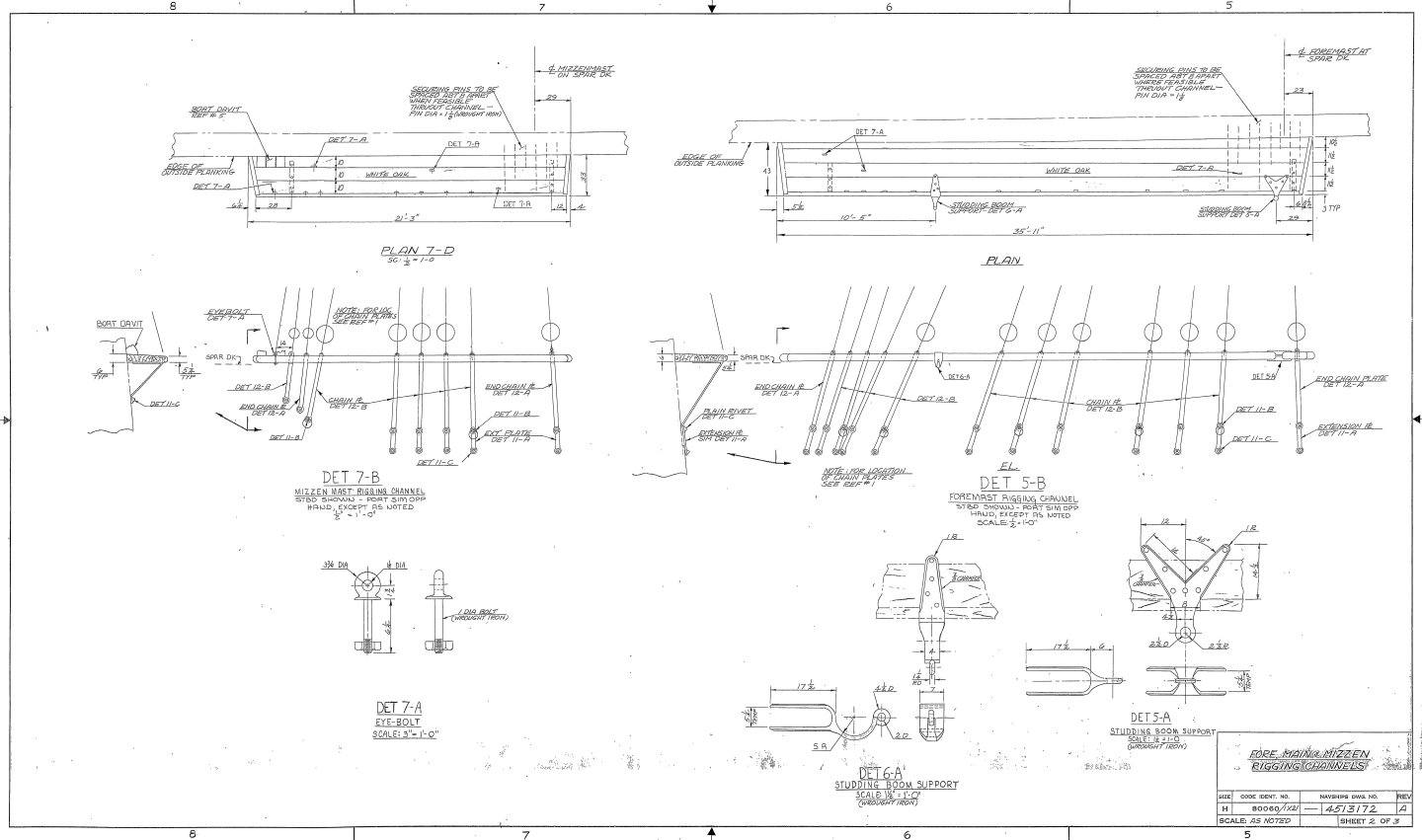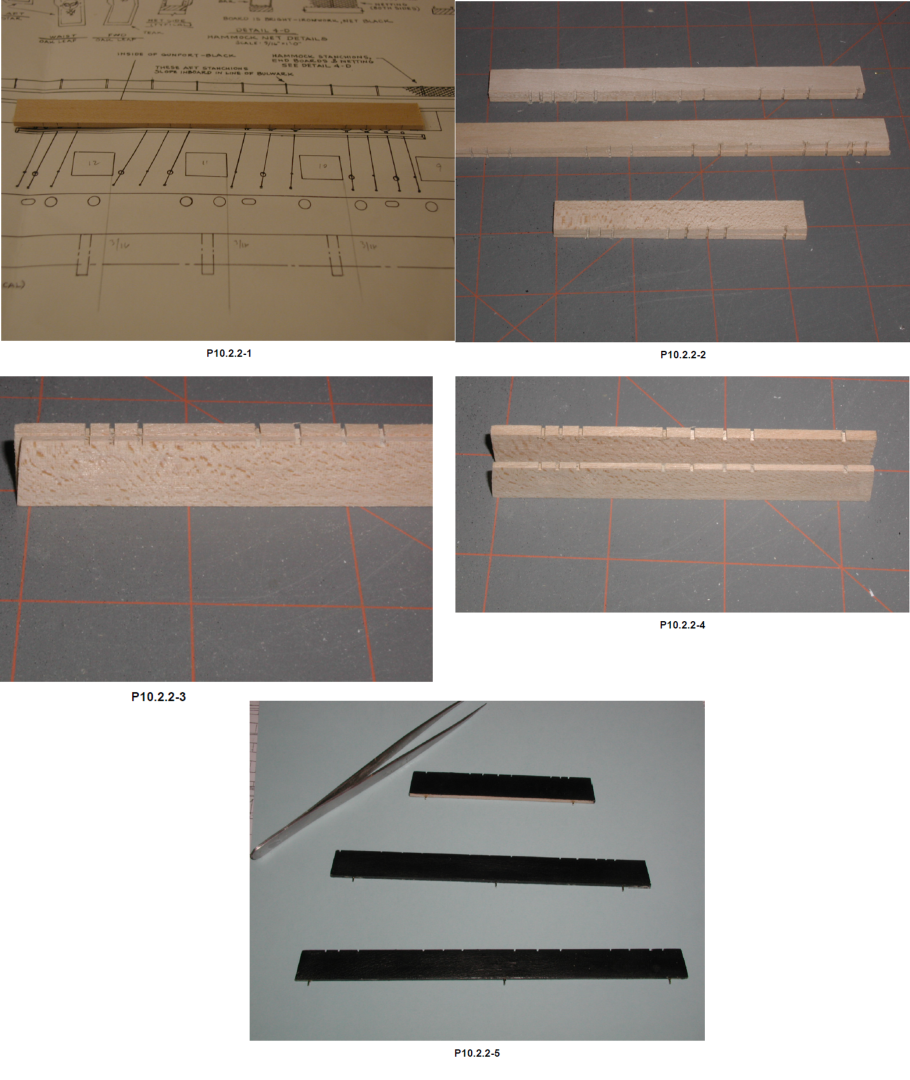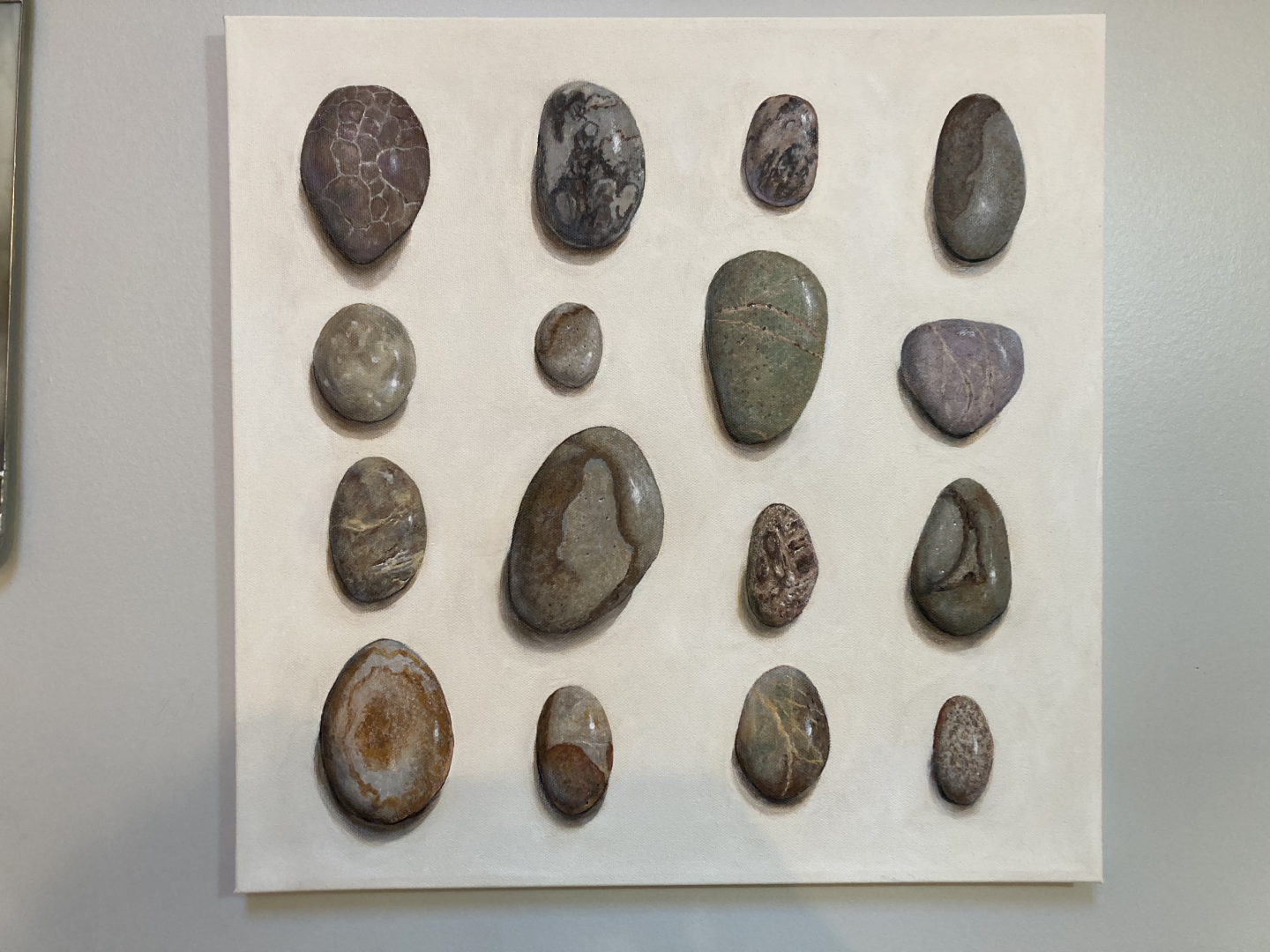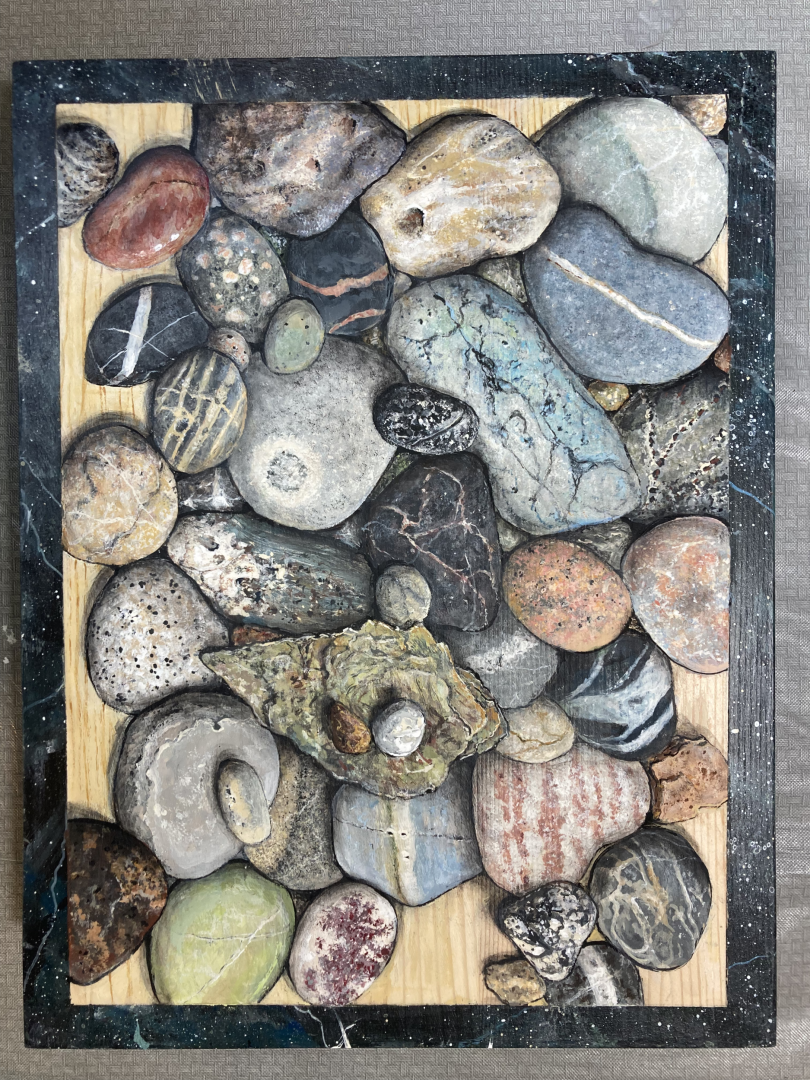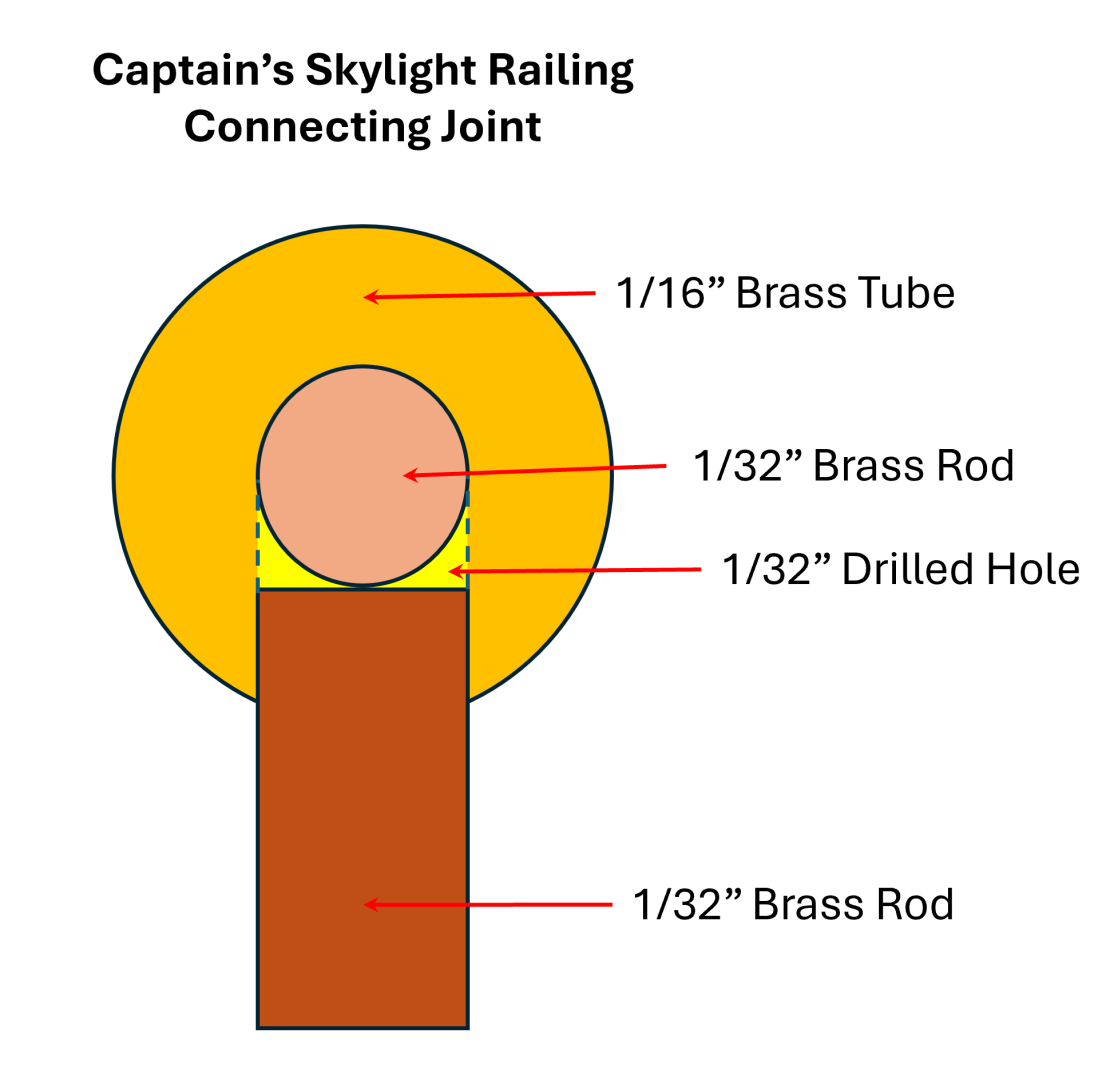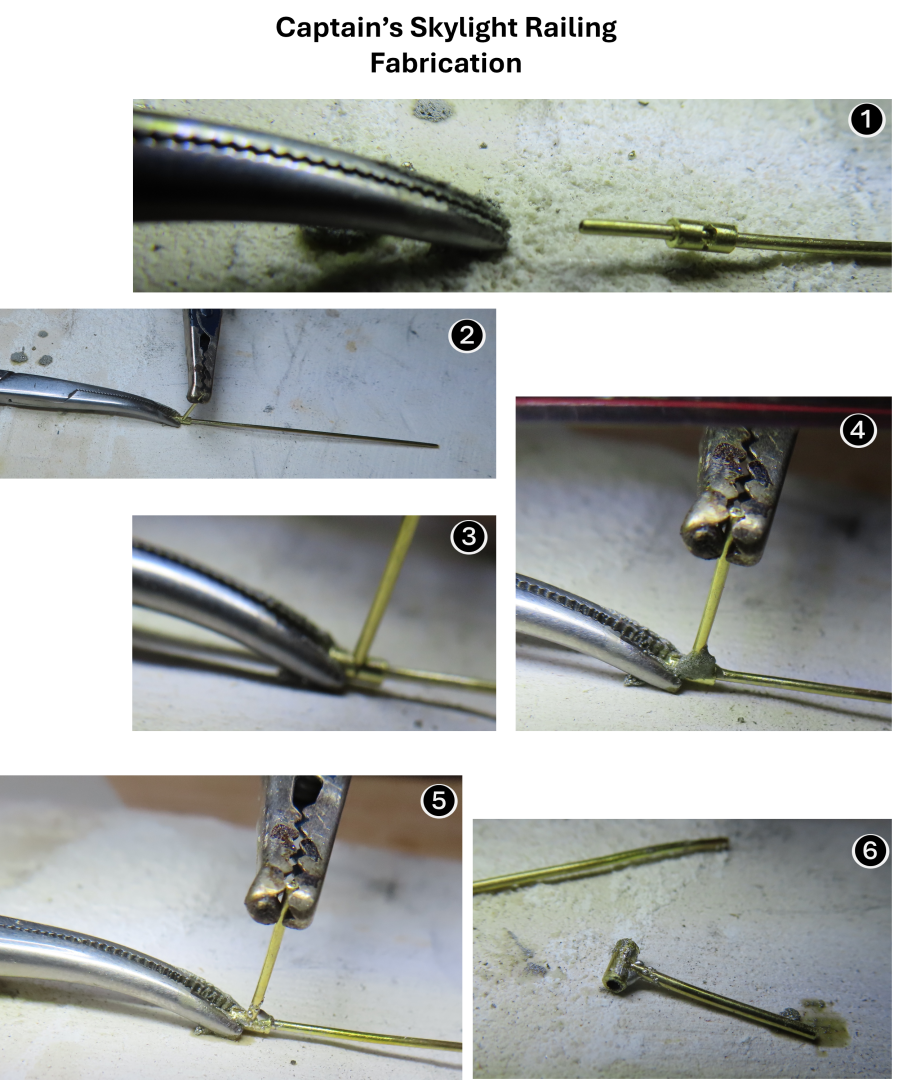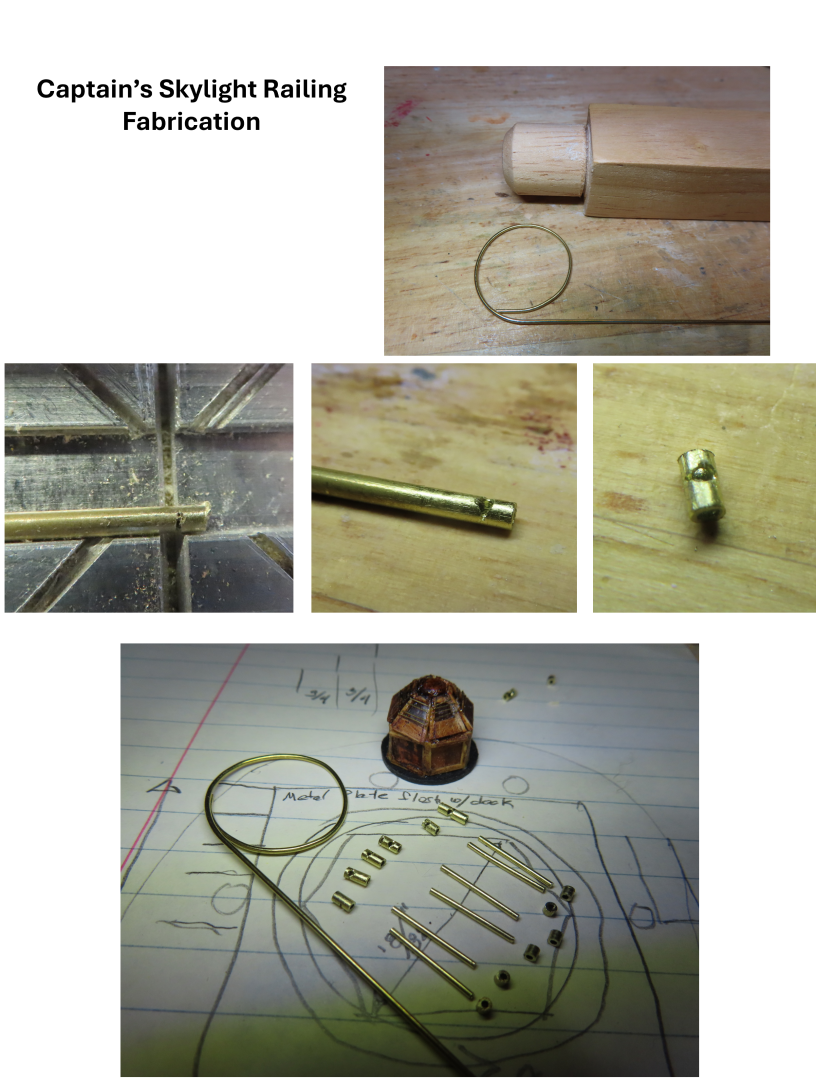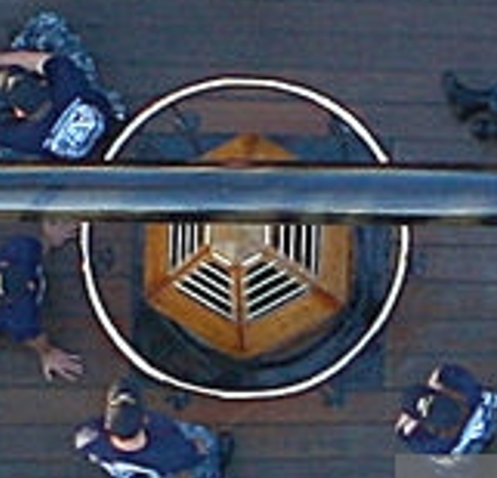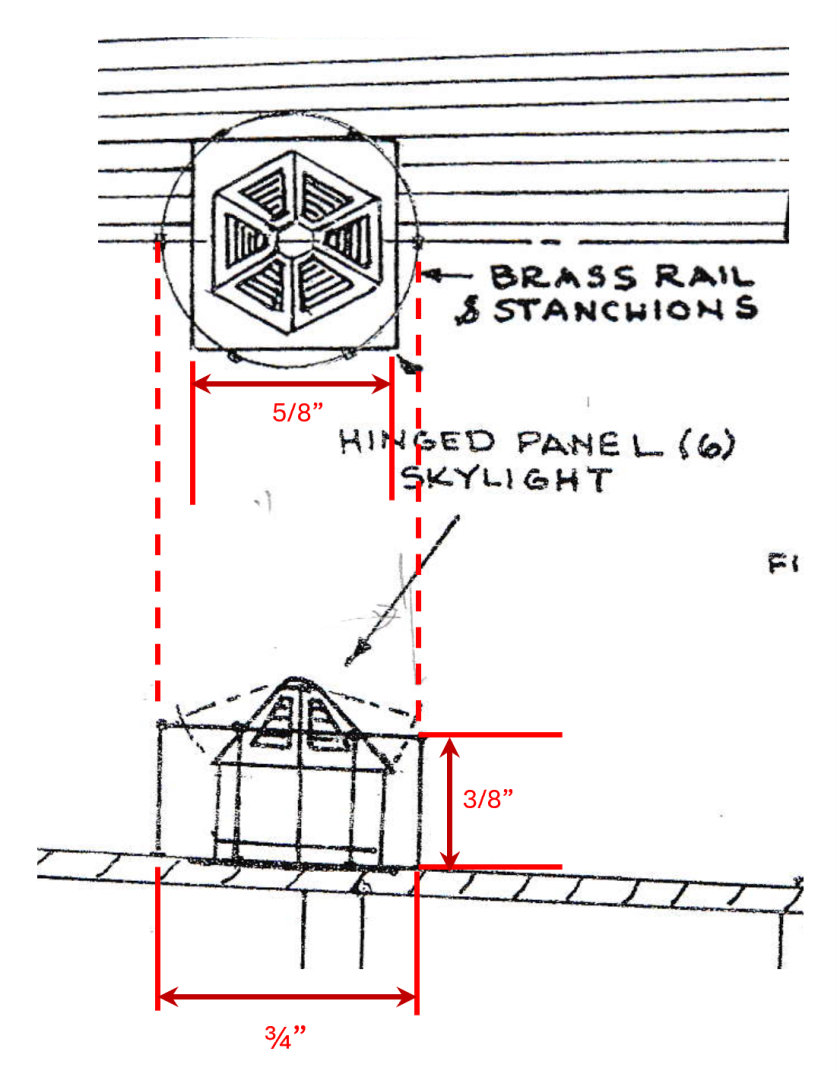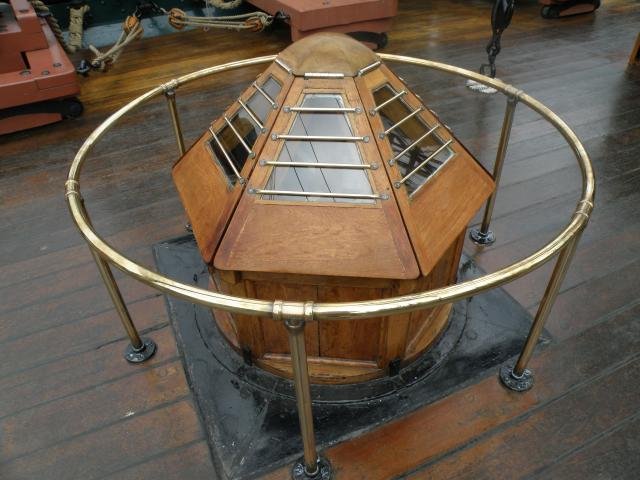-
Posts
2,618 -
Joined
-
Last visited
Content Type
Profiles
Forums
Gallery
Events
Everything posted by JSGerson
-
I started planking the center of the spar deck, starting from the capstan opening and working my way back to the stern until it filled in to the width of the hatchways. Then I applied the planks against the waterways, starting from the stern and working forward. The stern was fully planked to just forward of the captain’s dining area, then the plank voids will allow the gun deck to be visible. The forward areas are yet to be planked.
-
The MS plans show the planks tapering towards the stern on the spar deck, with the planks from 3/32” wide to the transom at 1/16” wide. The model’s far aft area of the stern is to be fully planked. I started the taper of the planks per the practicum, from the most aft hatchway. Unlike the gun deck, the spar deck does not have a plywood sub-surface for planks to rest and adhered to. If I had not opted to create the gun deck, it would have. Still, the planking is relatively easy to do although I had to make minor adjustments as the support beams were not always at the proper height as I thought they should be. Also, in order to provide as much viewing space to the gun deck below as possible, I wanted to plank the minimum number of strakes to support the carronades. To determine that, I finally took out one set of 3-D printed 1812 styled USS Constitution carronades I bought from Model Monkey a number of years ago to use as a measuring stick. These are the vertical angle, screw adjustment, type. Just to reiterate, because the 1927 restoration version (with the wedge adjustment) on the actual ship are known to be historically incorrect, all the carronades on my model are to be of the more accurate 1812 style. After I removed the excess spruce from the raw 3-D printed carronade, something didn’t look right. Looking at the available US Navy plans for the 1812 carronade and carriage which matched the few 1812 style carronades on the actual ship, there were some glaring differences to the Model Monkey versions. The sled (the part that slides back and forth on the skid) was perfect. The skid, however, was much narrower. Also, the pivot base on the nose of the skid was fastened to the bottom of the skid. According to Karl Heinz Marquardt’s book “The 44-Gun Frigate USS Constitution ‘Old Ironsides,” their diagram matched the Model Monkey’s version with one exception. The pivot plate was fastened to the top of the skid, to rest on the sill of the gun port (which the actual ship’s carronades do). No way was this lower pivot plate going to work on my model. So, there are three separate versions of what is supposed to be the 1812 carronade: 1812 version carronades installed on the actual ship now Marquardt’s, diagram Model Monkey 3-D printed version and this doesn’t include the carronades installed during the 1927 restoration. Is everything clear as mud!!?? So, the conclusion is: NOBODY knows for certain what the carronades looked like in 1812! Therefore, as Captain of this might ship, I’m going to make the Command Decision to use the carronades I purchased from Model Monkey and modified the pivoting base…unless I change my mind. Now back to planking.
-
In order to install the captain’s skylight and its railing, requires that I start planking the aft section of the spar deck. It’s been a while since I last planked the gun deck, so I reviewed the practicum on deck planking. It reminded me that I had to stagger the planking joints about ¾” apart in the adjacent rows. And where the two planks butt up against each other requires that there be a support beam below the joint. It was then that I realized I had a big support gap above the dining room area. I originally left this area devoid of beams because it wouldn’t be seen as it was to be completely covered with planking. However, it turns out that I did need them to support the butt joints. I don’t throw anything away while building a model. I still had the last two remaining support beams I originally cut off the bulkheads way back when. I needed these because they had the deck camber I needed. To use them, the vertical support was cut off and the width adjusted to fit under the spar deck waterway. I just had enough room to maneuver them into position and glued them into place with WellBond.
-
Those straps are relatively easy to make, but can be very tricky to install. They are so light, that the slightest, wrong breath or quiver of the hand can kick them out of alignment or knock them off altogether. And should they land on the floor, those little rascals run away and play hide & seek🤣. Well done! Jon
-
I don't have a woodworking shop. I do have a Byrnes saw (an absolute must), Byrnes Thickness sander (hardly used), small wood lathe (hardly used), a disk sander, a cordless variable speed Dremel, corded Dremel like tool, a 50yr old Dremel scroll saw, and a 20 yr old Dremel drill stand. These I collected over the years. Of course I also collected a bunch of hand tools, some I use a lot and some weren't worth the money. But what is most important is lots of patience, desire, tenacity, problem solving, and a healthy dose of crazy. For me, the the journey is the hobby. Once the model is done, it's done and you either put it on display, sell it, or give it away. But it's like eating potato chips, you can't eat just one. This will be my last big model. I figure I've got another couple of years to completion and I'll be in my 80s, so I'm going to enjoy this ride while it lasts. Anything I may build after that will be small fun stuff. Jon
-
Welcome to Model Ship World! I've been following you on SOS, albeit in silence. You've accomplished quite a bit; a lot more than me in the same time period. My excuse is that I added furnished gun deck and I just work slow, so I wouldn't be surprised if you completed your model before me. Oh yeah, I've been working on my build 8 years now and have just started the spar deck. I look forward to you future posts. Jon
-
Rebending Britannia metal is not fun nor easy. You look at it wrong and it will break. I'm not sure, but it might have been easier to scratch build the gudgeon. Another thing, I wasn't aware of is that the metal will deform under low but constant load. I completed building the Model Airways Albatros D.Va WWI German fighter plane in 2004 which came with Britannia metal wheel struts. It's been in a display case ever since and hadn't paid much attention to it as it is protected from excess heat and dust. About a year or so ago, I noticed that the wheel struts had collapsed under the weight of the model. I ordered and got new struts from model Expo, but have decided not to use the replacements because I assume the same thing could/would happen again. Instead, using the replacement struts as templates, I fabricated new struts from wood. These will not collapse over time. I just need to install them, which would require I set aside my Conny build for a while, but I still haven't decided when that will happen. Just be careful and mindful of the weaknesses of Britannia metal. Jon
-
If you have to magnify the images this much to see the difference, the average person from a foot away, won't. The choice to fabricate new lids for to accommodate the smaller diameter guns is yours as captain. Yes, I believe it may help create the illusion that all of the guns are the same diameter, but is it worth the effort, that is is your decision. I guess that depends on how finicky you are. Overall, your model looks great! Jon
-
I have a Byrnes saw (an absolute must), a Byrnes thickness sander (hardly used), a disk sander, a 20 year old Dremel drill press stand (horizontal and vertical positions only - no 45 degree), a 50 year old Dremel scroll saw (noisy as hell and lots of vibrations), a corded Dremel-like tool, a cordless variable speed Dremel tool, and a small wood lathe (hardly used). But, I don't have a drum sander, router, or belt sander. So I've use the Dremel drill press, as a disk sander, a router, and as a drill press. I make do with what I have. At 78 years old, I'm not investing in more stuff, so I have to make do with what I have. If I had a belt sander (which I have no experience with) wouldn't it be prone to sanding a flat edge? The use of the "drum sander" allowed me to maintained the camber. Whether I could have done that with a belt sander as easily, I don't know. Jon
-
Just a tip: DO NOT throw anything away. For instance, When I removed the horizontal braces (beams) from the bulkheads, because I was anticipating the fabrication of the gun deck and more realistic positioning of the beams based on the US Navy plans, I marked which bulkhead they came from and kept them. They were subsequently used when I put in the new spar deck beams because they had the proper deck camber, which I also traced onto the additional newly fabricated beams. Sometimes you need to reproduce the shape of something, you might be able to use the precut shell to reproduce a replacement part or a matching curve/shape of something. Jon
-
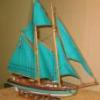
USS Constitution by mtbediz - 1:76
JSGerson replied to mtbediz's topic in - Build logs for subjects built 1751 - 1800
OK, so I rushed my initial response to you Mustafa because I was pressed for time. You are correct, there are no clear diagrams/instructions on how to fabricated the channels on the MS plans. That is a major shortcoming of the kit. So, I resorted to providing you an excerpt from Robert Hunt's practicum, pictures from the Mamoli plans, and actual US Navy plans. Per the practicum: Practicum photos below Mamoli (scale 1:93) scans below Mamoli 01.pdf Mamoli 02.pdf Mamoli 03.pdf -

USS Constitution by mtbediz - 1:76
JSGerson replied to mtbediz's topic in - Build logs for subjects built 1751 - 1800
Per the note on sheet 4 above the gun per 3rd from front, it states "for channels & chain plate see details SE: sheets 7 & 8. At the bottom of those referenced sheets you will see the details. Jon -
It seems the quest for detail is a curse or talent that is in my family. My mother's family had artists and woodworkers and she passed the painting talent on to my sister. I didn't get any artistic skills other than studying and getting a degree in Civil Engineering though I never practiced that skill. But it seems I like visual detail. Below are a few of the items my sister created. These are NOT photographs, but paintings.
-
To assemble the parts, I had two choices, glue them or silver solder them. The best way to assemble them with strength was to solder. If I was inept enough in this endeavor, hopefully I could fall back and use either CA glue or epoxy. Ideally in soldering, you want the joints to be mechanically strong on their own, and the solder just holds the pieces rigid. In this case that wasn’t possible. The solder had to do all the work. Just inserting the rod into the cut hole in the tube wouldn’t work. If the rod was inserted completely, it would prevent the joint from being threaded onto the railing. During the solder process a length of 1/32” rod was inserted into the tube to act as a “stop” for the 1/32” stanchion rod. Hopefully, it wouldn’t be soldered in place as it needed to be removed after the soldering process. As it turned out, of the first five attempts, two got soldered in place and had to be discarded. I found that if I used 1/32” brass rod as the “stop,” it was a 50-50 chance it would get stuck. However, when I switched to music wire for the “stop,” I had no problems. In the photos below: 1 – 1/32” brass rod inserted into tube to act as a “stop” (later music wire) 2 & 3 – Brass stanchion rod held in place for soldering 4 – Silver Solder paste applied to joint 5 – Soldered joint formed after heat with mini torch 6 – 1/32” brass rod “stop” removed. Competed soldered joint before cleaning the component up The last photo shows the joints strung onto the circular railing. The deck fasteners, rail closure, and final positioning of the stanchions will have to wait until the deck planking is installed.
-
I wanted to create stanchion/connecting joints from brass rods and tubes. This meant confronting my old nemesis, drilling holes in brass. And this was especially difficult as I wanted to do this on a curved surface of a tube. The hard part was biting into the brass with the drill bit, so I skipped that part! Instead, I cut halfway through into the tube with my miter handsaw, just exposing the interior of the tube. Then with a fine drill, that cut was opened into a small round hole, and with a 1/32” drill bit, it was widened to accept the 1/32” rod. The ends were trimmed a bit to shorten and center the drilled hole into the tube (not shown in the picture below). Finally, 1/16” length pieces of the tube were cut off creating the deck fasteners.
-
To be consistent with the companion ways, the rail and stanchions were made of 0.032” brass rod with the connecting joints and deck fasteners made from 1/16” brass tube. The brass rod was wrapped around my work bench peg insert which just happened to be ¾” diameter bending it to the initial shape of the circular railing.
-
Captain Skylight Railing I could not find any US Navy plans for the hand railing surrounding the Captain’s Skylight, so I referred back to the MS kit plans. There, I measured the dimensions as follows: the railing is ¾” in diameter and 3/8” high off the deck (scale). The skylight sits on what the plans identifies as a square metal plate, imbedded flush with the deck. The composition of the plate material is hidden and therefore will not be fabricated but the area will be just painted black to get the flush effect. From the photos, it appears that the plate is coated with some sort of tar material, so I assume this was a form of a waterproofing seal for the skylight. BTW, the US Navy plans for the skylight do not show the plate.
-
Strand, are you planning to build a cross section model of the Constitution? I have a plethora of images (over 4,000) and US Navy plans of the ship. That's about 5Gb worth of stuff, so you are going to have to be just a little bit more specific of your needs. I will gladly provide you anything I have, but it's best if you request them when you need them. Jon
-
Officially, the gun deck is now complete...I think. I am now planning to install the Captain's skylight I previously made onto the spar deck. This will involve planking part of the spar aft section, creating the black square area on the planks in the area where the skylight will sit on, and fabricating and installing the circular brass railing. No idea how long or short time this will take. Jon
About us
Modelshipworld - Advancing Ship Modeling through Research
SSL Secured
Your security is important for us so this Website is SSL-Secured
NRG Mailing Address
Nautical Research Guild
237 South Lincoln Street
Westmont IL, 60559-1917
Model Ship World ® and the MSW logo are Registered Trademarks, and belong to the Nautical Research Guild (United States Patent and Trademark Office: No. 6,929,264 & No. 6,929,274, registered Dec. 20, 2022)
Helpful Links
About the NRG
If you enjoy building ship models that are historically accurate as well as beautiful, then The Nautical Research Guild (NRG) is just right for you.
The Guild is a non-profit educational organization whose mission is to “Advance Ship Modeling Through Research”. We provide support to our members in their efforts to raise the quality of their model ships.
The Nautical Research Guild has published our world-renowned quarterly magazine, The Nautical Research Journal, since 1955. The pages of the Journal are full of articles by accomplished ship modelers who show you how they create those exquisite details on their models, and by maritime historians who show you the correct details to build. The Journal is available in both print and digital editions. Go to the NRG web site (www.thenrg.org) to download a complimentary digital copy of the Journal. The NRG also publishes plan sets, books and compilations of back issues of the Journal and the former Ships in Scale and Model Ship Builder magazines.



